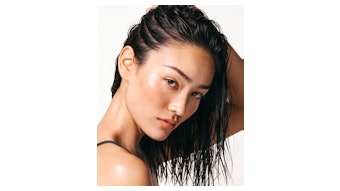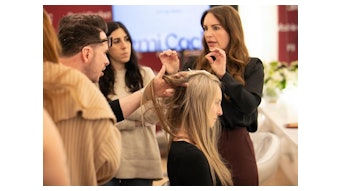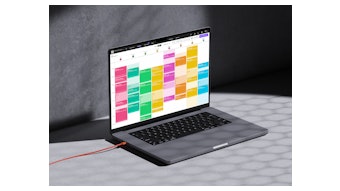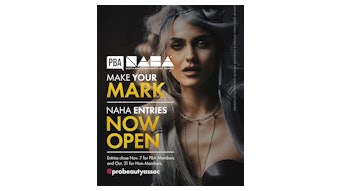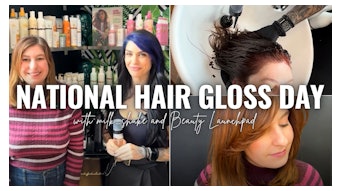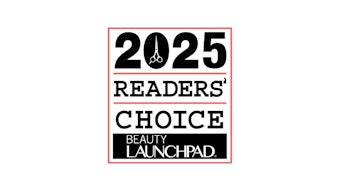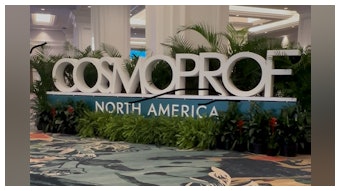
While economists have yet to officially declare a recession in the United States, signs of economic strain are becoming harder to ignore. Layoffs, federal budget cuts, a trade war and rising prices—partly driven by President Trump's tariffs—indicate we may be inching closer to one. Historically, economic uncertainty leads to a dip in hair salon services. It’s no surprise, then, that the term "recession hair" is trending on social media. Reflecting a shift toward practicality, consumers are opting for low-maintenance and lived-in cuts, colors and styles designed to stretch the time between salon visits.
Log in to view the full article
While economists have yet to officially declare a recession in the United States, signs of economic strain are becoming harder to ignore. Layoffs, federal budget cuts, a trade war and rising prices—partly driven by President Trump's tariffs—indicate we may be inching closer to one. Historically, economic uncertainty leads to a dip in hair salon services. It’s no surprise, then, that the term "recession hair" is trending on social media. Reflecting a shift toward practicality, consumers are opting for low-maintenance and lived-in cuts, colors and styles designed to stretch the time between salon visits.
Recession Hair Trends
"The recession hair trend will lead to hair that requires less, whether it’s less foils, less visits, less effort," hairstylist and educator Blake Reed Evans (@blakereedevans) shares.
Earthy, darker blonde and brunette tones—dubbed "recession blonde" and "recession brunette"—are becoming standout hair color trends. These shades often feature techniques like shadow roots or root melts, which blend natural root colors seamlessly for a softer, low-maintenance grow-out.
"When the economy is tight, less is more. You still want that incredible color without compromising a sense of luxury," renowned colorist Monique McMahon (@moniquemcmahoncolour) explains. “Recession blonde or brunette is about making those small tweaks and not venturing too far from your natural tones, or even going for a color that will complement your natural tone as the color grows out.”
As for styles, quiet and practical luxury will continue to be popular aesthetic trends. We've already seen this during awards season, with the biggest names in entertainment sporting vintage Hollywood waves, victory rolls, ballerina buns and 1940s bobs on the red carpet. Elegant styles like these might appear counterintuitive in a period where clients are focused on saving, but industry analyst Gordon Miller (@gordnm) explains that the reality is quite the opposite.
"If you study history, you'll see that at the worst times is when we have the most luxurious trends," he says. "If you put stuff in front of people that will potentially make them feel good, I think — even when times are difficult or there's a lot of unknown in what's coming up — they will grab on to that because it does make us feel good, and we want to feel good."
But, what do these trends mean for the hair professional and the industry at large?
Recession Hair's Impact on the Industry
Thankfully, the hair and beauty industry tends to be relatively recession-proof. Consumers often prioritize their appearance, self-care and wellness over other expenses. Meaning, they are more likely to reduce spending in other areas before cutting back on beauty-related purchases.
This is reflected in Square’s Future of Beauty Report for 2025, which reveals that consumers are scaling back on beauty spending less than in other sectors like restaurants and retail. The report reveals that slightly more than half of respondents have scaled back their beauty purchases. In comparison, 63% reported cutting down on dining out, while 58% reduced their spending on retail.
"Every time there’s been a major economic shift, whether it was the Great Depression, WWII or the 2008 recession, hair trends changed. Beauty didn’t go away, it adapted," Master stylist Drew Inge (@domyhairdrew) explains. "Right now, we’re headed deeper into a phase of lower-maintenance, longer-lasting color. It’s why things like lived-in blonding, shadow roots and soft dimension are in. People want results that look expensive, but don’t require a ton of upkeep."
Inge is the creator of the History of Hairstyling series, which he posts to his Instagram. The series covers how government, war, inflation and cultural shifts have shaped the way we wear our hair.
"Hair has always reflected what’s going on in the world, and now’s no different," he says. "The economy is unstable, but people still want to feel good. That might not always mean a full foil, but it does mean they’re looking for something that feels thoughtful, intentional and personalized."
Although the beauty industry may be less affected by a potential recession compared to other sectors, clients might still adjust their salon habits, prompting hair professionals to reassess their service offerings. Miller advises professionals to look beyond economic headlines and social media trends when making changes to their menus.
"We should always be operating with the mindset that any client, at any time, could be navigating their own personal version of a recession. Whether it’s a job change, rising rent, health bills or uncertainty about the future—a subset of all clients are often in search of options," he says. "And it’s up to us to make sure our menus reflect that reality, in both good times and hard times."
How Hair Professionals Can Adapt
If you are feeling the pressure amidst a looming recession and need to make changes, Reed Evans suggests starting at the consultation to see if your clients' hair goals have changed or they want a lower-maintenance hair look.
When refreshing or updating your service menu, consider adding a variety of options designed to encourage clients to return to the salon between appointments. Pair this with product recommendations or practical tips to help them maintain their look longer. Inge strongly suggests this strategy, encouraging hair pros to be creative and confident in their approach.
"Think mini-services, strategic highlight placements, add-on root taps or even giving clients styling tips to stretch their look between visits," he says. "We don’t need to lower our value, we need to show clients where the value already exists."
Miller also emphasizes the importance of add-on services to grow revenue; however, he stresses that business models should always be designed to meet clients where they are financially, not just during periods of economic downturn.
"The most savvy salons approach business every day as if a recession could hit tomorrow—because for some clients, it already has. We shouldn’t be scrambling to adapt only when the economy dips. We should be building menus and systems that flex naturally," he says.
Navigating challenging times requires more than just competitive pricing or quality services—it’s about cultivating trust and building meaningful relationships with your clients every step of the way.
"Today’s clients are looking for smart, trusted professionals to help them make choices that fit their needs and budgets," Miller explains. "That means transparency, consultation and a well-structured service menu that invites conversation—not confusion. It’s not about offering 'low price' services. It’s about curating value across price points, all while staying true to your identity."
To thrive in this industry, the client experience is paramount. It goes beyond the hair—it’s about making each person in your chair feel cared for every time they visit the salon.
"Clients still want the experience and quality, but they’re thinking about longevity and value more than ever," Inge adds. "Stylists who can deliver both are going to thrive. Because, right now, it’s not just about hair. It’s about helping people feel grounded, confident and taken care of."
About Our Experts
Blake Reed Evans (@blakereedevans) is a hairstylist and owner of Shear Art Salon in Tampa, FL. He is a member of SalonCentric’s #ItTakesAPro Team.
Drew Inge (@domyhairdrew) is a master stylist and owner of Headcase Colour Bar in Newport News, VA. He is a winner of Beauty Launchpad's 25 Under 50K contest for 2024.
Gordon Miller (@gordnm) is a pro beauty executive, thought-leader and consultant. He is the host of two podcasts: Social Beauty Makers and Mastering Beauty from Beauty Cast Network.
Monique McMahon (@moniquemcmahoncolour) is an international color educator and Wella Professionals ANZ Ambassador.
